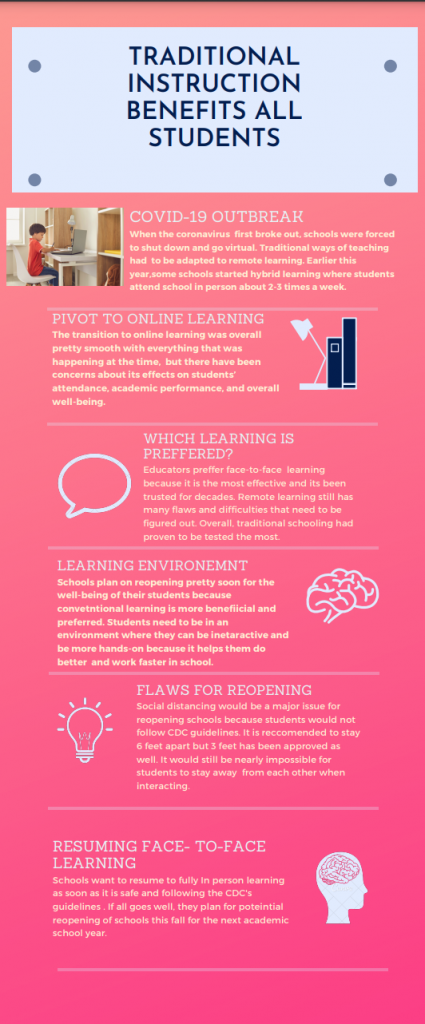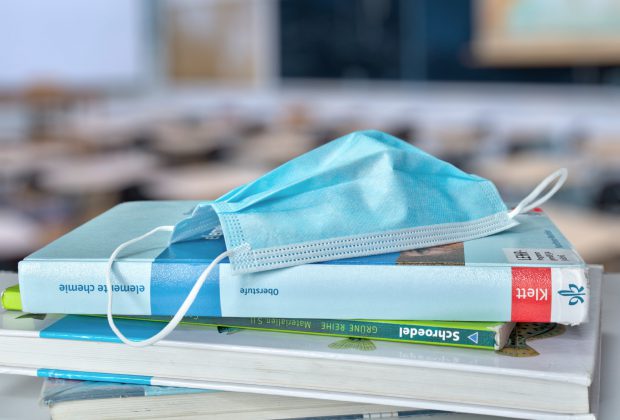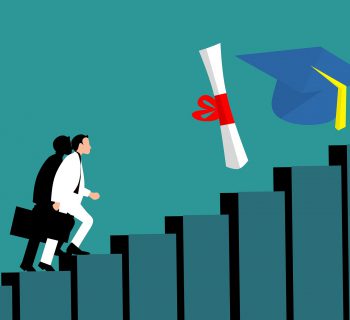Precious Oke
Disclaimer: Articles reflect the views of the author and/or those quoted and do not necessarily represent the views of CCBC or The CCBC Connection.
Exactly about a year ago since schools were indefinitely shut down due to the outbreak of the COVID-19 pandemic, learning has been restricted to an online and remote system. That was until earlier this week, Apr. 6, when some schools resumed a hybrid learning system that involves students attending school in-person only twice a week.
The potential full reopening of schools by the fall came as good news to all parents, and especially to students who have had trouble with online learning, considering that they have been somewhat behind within the past two academic school years.

Infographic by MCOM 111 student, Leyla Aliyev,
The pivot to online learning may appear to have been a smooth transition in the wake of the pandemic, however, there have been various concerns about its effects on students’ attendance, academic performance, and overall well-being.new media project
Face-to-face learning, following the CDC’s guidelines, must resume fully as soon as possible, not only because the system of learning is conventional but for the well-being of students nationwide. Also, students need to have hands-on experience in a physical interactive environment again, considering that it helps them easily assimilate and process school work faster, under the right amount of supervision.
According to the article, “Schools Plan for Potential of Remote Learning into the Fall,” on ABC News, President Joe Biden has made reopening schools a top priority but administrators say there is much to consider as new strains of the Coronavirus appear and teachers wait their turn for vaccinations.
Though most parents are in favor of schools reopening because they will feel a burden lifted off their shoulders since they have had to be teachers to their children at home in the past year, there have been safety concerns as to how effective the reopening of schools would be. Some parents are also hesitant to send their children back to school before they get vaccinated.
Furthermore, before The CDC released the revised guidance document for the full reopening of schools, they went back to the drawing board to address a few vital issues in the initial document that may hinder the process.
One of the major flaws of the reopening plans that were a concern was the community spread metric issue. This essentially is the fact that schools in communities with more cases would have to remain closed and stay remote, which goes against the initial plan.
These communities are considered "red zones" so reopening the schools around there would do more harm than good and it’ll ultimately make the COVID cases skyrocket potentially increasing the death toll.
Another major flaw that was addressed was the issue of social distancing. The CDC approved of 3 feet of distance between individuals as long as other preventive measures are in place but then they recommended and held firm to the 6 feet distance rule.
This could be a problem because it would be almost impossible for students to maintain 6 feet of distance at all times, and this hinders the plan of reopening schools altogether.
According to the article, “Schools Finally have the Road Map They Need to Reopen,” in The Washington Post, the new guidance addresses all of this. The biggest change is the adoption of 3 feet of distancing for students as sufficient when all other prevention strategies are in place, including universal masking, hand-washing, and enhanced ventilation.
The revised document shows guidance for the community spread metrics, adequate cross ventilation, sports, keeping track of contact tracing and testing, etc., all of which would aid the full reopening of schools in the fall. The article’s conclusion says the road map is clear for how to get kids back in class.
To any school that’s closed and meets these measures, it’s time to open. To any school that opened without any of these controls in place, they must be implemented immediately. There can be no more delay.
To conclude, face-to-face learning has been tested and trusted, and it has proven to be the most effective technique used by educators. Schools have already commenced in-person learning but it needs to be expanded fully as early as the next academic school year for the well-being of students and to put them back on the right track to securing a bright future for themselves.














